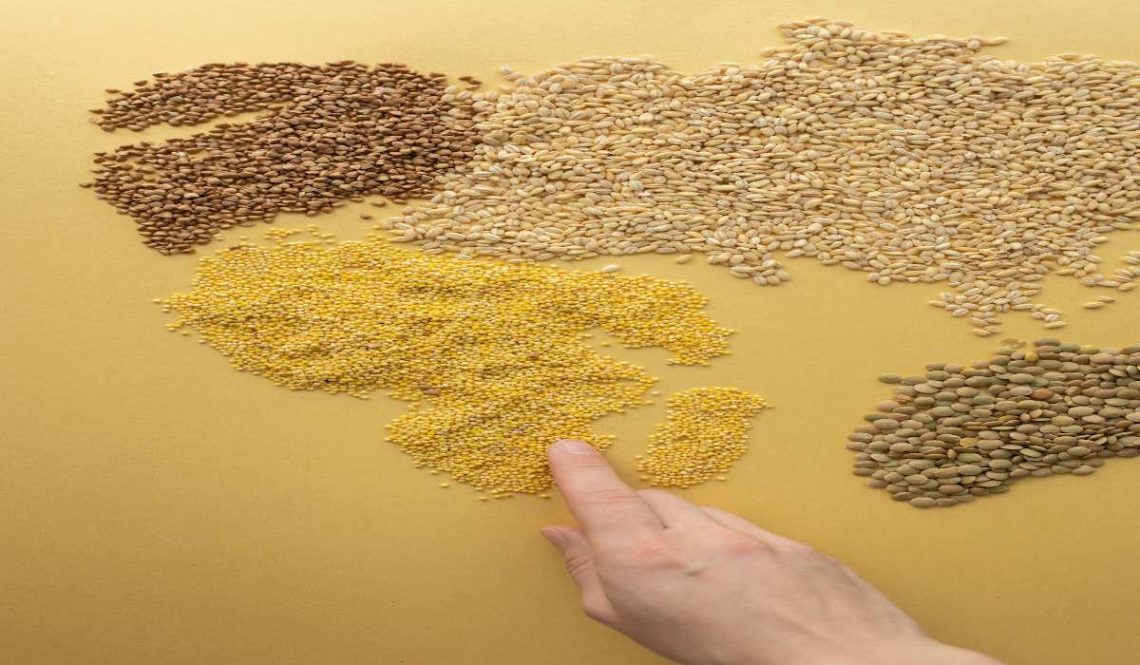
Ancient Indian Grains and Their Modern-Day Revival
India’s rich history of agriculture is filled with stories of ancient grains that have been a part of our diets for thousands of years. These grains, often called ‘superfoods,’ are making a strong comeback today as more celebrities and health enthusiasts look for healthier and more sustainable food options. In this blog, we will take a closer look at these ancient grains, their benefits, and why they are becoming popular again in modern times. Keep reading!
What Are Ancient Indian Grains?
Ancient Indian grains are crops that have been grown for centuries without much change. Unlike modern grains that are often heavily processed, these grains retain most of their natural nutrients. Here are some of the most well-known ancient Indian grains:
- Millets: Millets like ragi (finger millet), bajra (pearl millet), and foxtail millet have been staple foods in India for centuries. These grains are high in fiber, protein, and essential minerals, making them a nutritious choice.
- Amaranth: Also known as “rajgira,” amaranth is a grain that’s packed with protein and all nine essential amino acids. It’s also gluten-free, which makes it a great option for those with gluten sensitivities.
- Sorghum: Known as “jowar” in India, sorghum is a versatile grain that can be used in many forms, from flour to porridge. It’s rich in antioxidants and has a low glycemic index, which is great for people with diabetes.
- Barley: Barley, or “jau,” has been cultivated in India for thousands of years. It’s high in soluble fiber, which helps lower cholesterol and supports heart health.
Also Read: History of Indian Spices: A Journey Through Time
The Cultural Significance of Ancient Grains
Ancient Indian grains are more than just food; they are an important part of our culture and traditions. These grains have been celebrated in festivals, rituals, and traditional medicine for generations.
- Millets in Rituals: In many parts of India, millets are used in religious ceremonies. For example, in Karnataka, “ragi mudde” (finger millet balls) is a common offering to gods, symbolizing sustenance and abundance.
- Amaranth and Fasting: During fasting periods like Navratri, amaranth is often consumed because it’s easy to digest and packed with nutrients. It’s believed to purify the body and soul, making it a staple during religious observances.
- Sorghum in Folk Medicine: Sorghum has been used in Ayurveda and traditional medicine for its health benefits. It’s thought to have cooling properties and is used to treat digestive issues and dehydration.
The Health Benefits of Ancient Grains
Ancient grains are known for being nutrient-dense, but there are some lesser-known health benefits that make them stand out:
- Millets for Mental Health: Millets are rich in magnesium, which is important for efficient brain function and mood regulation. Regular consumption of millets can help reduce the chances of mental health problems like depression and anxiety.
- Amaranth for Bone Health: Amaranth is an amazing source of calcium, which is quite crucial for strong bones. It also contains lysine, an amino acid that helps the body absorb calcium more effectively.
- Sorghum for Eye Health: Sorghum is packed with antioxidants such as lutein and zeaxanthin, which protect the eyes from age-related issues like macular degeneration.
- Barley for Detoxification: Barley contains a special fiber called beta-glucan that helps detoxify the liver by binding to toxins and removing them from the body.
Why Ancient Grains Are Making a Comeback
There are several reasons why ancient Indian grains are becoming popular again:
Health Consciousness
Nowadays, people are becoming more aware and therefore, started acknowledging the health benefits of these grains and are including them in their diets. Millet-based products like breakfast cereals, energy bars, and gluten-free bread are now available, making it easier to eat healthy.
Sustainable Farming
Ancient grains are often more resilient to harsh weather and require less water and fertilizers, making them a sustainable choice for farmers, especially in drought-prone areas.
Government Support
The Indian government has recognized the value of these grains and launched initiatives like the National Millet Mission to increase their production and consumption.
Growing Global Demand
With an increase in the global demand for healthy and natural foods, Indian grains like millet and sorghum are being exported worldwide, contributing to their revival.
Bottom Line
The revival of ancient Indian grains is a wonderful return to our roots, offering both health benefits and a sustainable choice for the future. These grains, with their rich history and cultural importance, are not just a trend. They are a smart and healthy choice for anyone looking to improve their diet. As we continue to inculcate these grains in our diets, we are not only honoring the wisdom of our ancestors but also contributing to a healthier and more sustainable world. So, why not add some of these super grains to your diet and enjoy their many benefits?
FAQs
1. What are ancient Indian grains?
Ancient Indian grains are traditional crops that have been cultivated for thousands of years. They include millets, amaranth, sorghum, and barley. These grains are minimally processed, retain their natural nutrients, and are often more nutritious than modern, refined grains.
2. Why are ancient Indian grains making a comeback?
Ancient Indian grains are gaining popularity due to their exceptional health benefits, including high fiber content, rich protein, and gluten-free options. They are also more sustainable and resilient to climate change, making them a preferred choice for health-conscious consumers and farmers alike.
3. What are the health benefits of ancient Indian grains?
Ancient Indian grains are packed with nutrients. Millets, for example, are rich in magnesium, which supports mental health. Amaranth is high in calcium for bone health, while sorghum is good for eye health due to its antioxidant content. Barley is beneficial for detoxification and heart health.
4. Are ancient Indian grains gluten-free?
Yes, several ancient Indian grains are naturally gluten-free. Grains like millet, sorghum, and amaranth do not contain gluten, making them an excellent option for people with gluten intolerance or celiac disease.
5. Can ancient Indian grains help in weight management?
Yes, ancient Indian grains are high in dietary fiber, which helps in better digestion and keeps you feeling full longer. This can assist you in weight management by reducing overeating and helping maintain a balanced diet.
6. Where can I buy ancient Indian grains?
Ancient Indian grains are available in most health food stores, organic markets, and online platforms. With their growing popularity, many local grocery stores also stock these grains in various forms, such as flour, whole grains, and ready-to-eat products.
Khushi Jha
I am Khushi Jha, a proud alumna of Delhi University with a degree in History and Political Science. My fascination with the events that have shaped our world drives me every day. Currently, I am pursuing my Master’s in History, diving even deeper into global dynamics and the incredible heritage of India. I firmly believe that India's rich heritage deserves wider recognition. I strive to bring its stories to the forefront, ensuring they are celebrated and acknowledged on a global stage. I have written extensively across various niches, including fashion, health, lifestyle, real estate, hospitality, amongst others. In my free time, you’ll find me immersed in books, both fiction and non-fiction, or simply enjoying some much-needed rest.
You May Also Like

Pushkar Camel Fair 2025: A Complete Travel Guide (Oct 30 – Nov 5)
September 27, 2025
Tirumala July 2025 Festival Guide: Rituals, Darshan Timings, Travel Tips, and Nearby Places
June 28, 2025


